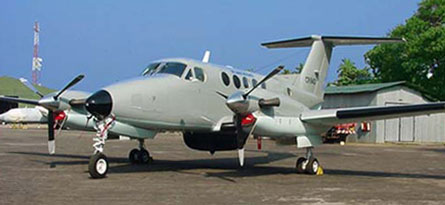The Sri Lankan air force lost nine aircraft in a surprise attack on its Anuradhapura air base on 22 October, representing its biggest inventory loss since Liberation Tigers of Tamil Eelam (LTTE) separatists took up arms in the 1970s.
Losses included three Nanchang PT-6 basic trainers, a Nanchang K-8 advanced jet trainer and a Beechcraft 200 surveillance aircraft. Rotary-wing losses included a Bell 206 utility, Mil Mi-17 transport and Mi-24 assault helicopters, says the Sri Lankan defence ministry. A Bell 212 transport also crashed due to technical reasons during the attack, while a second Mi-24 was badly damaged.
 |
|---|
The ministry has not confirmed news reports that suggest a further three PT-6s and three unmanned air vehicles were either destroyed or damaged.
The air force's fighter fleet, which comprises Chengdu F-7s, Israel Aerospace Industries Kfirs and RSK MiG-27s was not damaged, but analysts say the loss of the K-8 and numerous helicopters is a major blow to the service, as the aircraft were useful in operations against rebels in Sri Lanka's northern and eastern regions.
The Beechcraft 200 was also crucial, as it helped to monitor coastal regions, from which the rebels have also launched attacks in the past. The Tamil Tigers have previously also employed armed Zlin Z-143 light aircraft, and performed surveillance operations using basic UAVs.
 |
|---|
"The fighters may be intact, but the LTTE has dealt a serious blow to Sri Lanka's surveillance, training, night flying and logistical capabilities," says one analyst.
Marshal Roshan Goonetilleka of the Sri Lankan air force says the nation's air security is being given top priority, and adds that the service plans to purchase new aircraft to replace those that were destroyed. Sri Lanka is expected to increase its procurement budget in 2008 to acquire replacements, with analysts suggesting priority will be given to obtaining helicopters and UAVs.
Colombo increased the air force's budget to 19 billion Sri Lankan rupees ($171 million) in 2007, from 15 billion rupees in 2006, with its procurement budget having risen from 5 billion rupees to 9 billion rupees.
Source: Flight International























